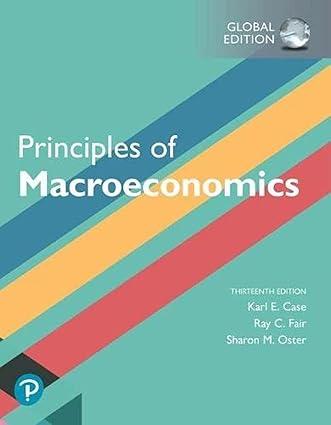The calculations described in Chapter 6 on how to construct a chain-linked price index may seem complicated
Question:
The calculations described in Chapter 6 on how to construct a chain-linked price index may seem complicated and a bit arcane to you. But throughout the last months of 2012 and into early 2016, as Republicans and Democrats argued over the federal budget, chain linking became a hot topic.
As we know from the discussion of fixed weights in Chapter 6, chain linking a price index accounts for product substitution that people make in response to relative price changes. Fixed-weight price indices, which do not take into account this substitution, tend to overestimate inflation.
There are two versions of the consumer price index (CPI), one using fixed weights and one using chain linking. The fixedweight version is the one that is used to adjust Social Security benefits and veteran benefits to price changes. If, say, the CPI increases by 2 percent in a year, benefits are increased by 2 percent. If the chain-linked CPI were used instead, benefits would tend to increase more slowly because in general the chain-linked CPI increases less than does the fixed-weight CPI (because of product substitution). You may see where this is going. One way to decrease expenditures on social security and veteran benefits in the future would be to use the chain-linked CPI rather than the fixed-weight CPI. The nonpartisan Congressional Budget Office estimated that if the chain-linked CPI were adopted, it would save the federal government about $145 billion over a 10-year period from the lower benefits.

Question
Tax brackets are also tied to the fixed-weight CPI. How would tax revenue be affected if the chain-linked CPI were used instead?
Step by Step Answer:

Principles Of Macroeconomics
ISBN: 9781292303826
13th Global Edition
Authors: Karl E. Case,Ray C. Fair , Sharon E. Oster





